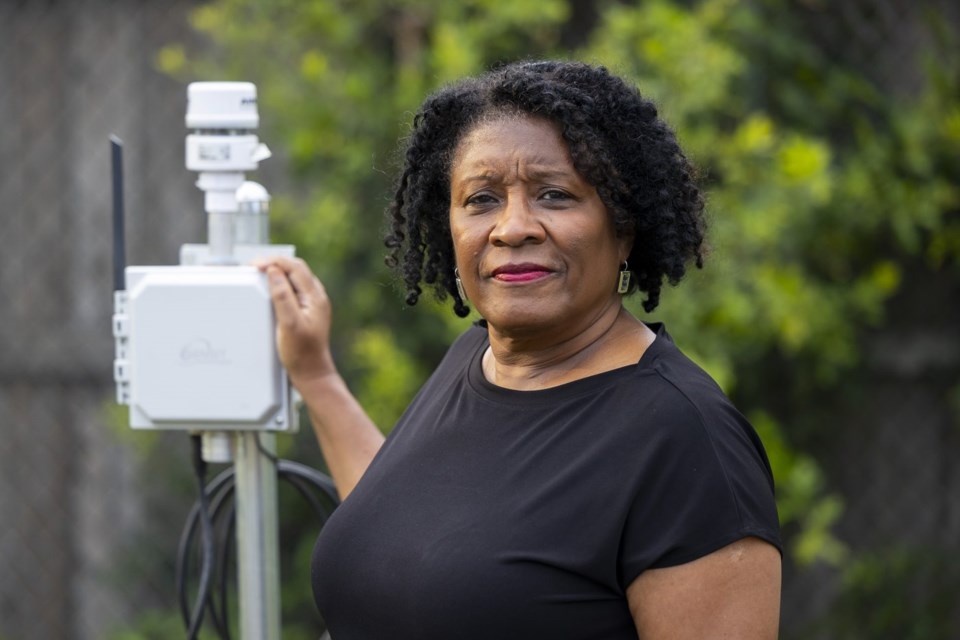After World War II, Black people in Houston found the rare chance to buy a nice home in the new community of Pleasantville, Texas. But in the years that followed, officials routed the Interstate 610 loop, with its tailpipe exhaust, along one side of Pleasantville and cement plants and other heavy industry grew nearby.
Just days after taking office in 2021, the Biden administration made huge promises to heavily polluted Black, Latino, Indigenous and lower income areas like this, known as environmental justice communities.
To evaluate how well Biden and his departments delivered on these promises, The Associated Press spoke to some 30 environmental justice groups around the country, people who have been trying for years and sometimes decades to get places near their homes cleaned up — Superfund sites, petrochemical plants and diesel-burning ports, for example.
Many said this administration has done more than any one has previously. With ambition not seen before, they said, federal officials have solicited their advice, written stricter environmental protections and committed tens of billions of dollars in funding.
“Once he was in office, he put money where his mouth was,” said Beverly Wright, who directs the Deep South Center for Environmental Justice and sits on the White House Environmental Justice Advisory Council. “I almost gasped when I saw the amount of money.”
But the local advocates interviewed have concerns, too. Some said Biden administration policies have been too weak to drastically reduce pollution and change their lives. Officials have even favored climate technologies that make conditions worse, they said.
Those advances could be reversed if the presidential election Nov. 5 brings in a Republican administration. Republican presidential nominee former President Donald Trump considers much of the regulation these groups favor to be overreach.
Pleasantville, near Houston’s petrochemical heartland, got a piece of Biden’s funds. Bridgette Murray, founder of the group Achieving Community Tasks Successfully, said residents wanted what many environmental justice groups want, data about what is in the air. Now a federal grant will help them do air testing, she said, and they can show those results to regulators.
It won’t actually clean the air, Murray said, “but if we don’t do anything, there will never be change.” Sustained funding will be necessary to accomplish that, she said.
The Texas grant is one of many. For each region of the country, the Environmental Protection Agency handed large amounts of money to an established group to dole out to local ones who know their communities’ needs. In Massachusetts, for example, Boston-based nonprofit Health Resources in Action got $50 million to do this.
The Inflation Reduction Act injected billions into Biden’s effort — for the first time making significant funds available for environmental justice. Officials have also written regulations they say will drastically improve public health.
But nearly all the interviews with environmental justice groups surfaced concerns, too.
Anne Rolfes, director of the Louisiana Bucket Brigade, which helps communities in a main petrochemical corridor, said the Biden administration listens to activists, invites them in for photo ops, but doesn’t enforce the law aggressively enough to keep the state’s Black population safe.
“When you have an EPA that basically won’t assert its authority, then a state like Louisiana that is wholly captured by industry can ignore the federal government. And that’s what they do,” Rolfes said.
EPA enforcement has increased under Biden, but Rolfes said federal officials still give the state too much power to ignore clean air rules.
Some local organizations have found it difficult to navigate the federal bureaucracy and apply for money despite technical assistance that’s available.
A big obstacle is time. Nearly four years in, some Biden administration programs are just beginning to distribute money. Vice President Kamala Harris, now the Democratic nominee for president, has backed President Biden’s environmental justice work, saying in December that he has “put equity at the center of all of our climate investments.” A spokesperson for the Harris campaign did not respond to a request for comment.
Some environmental advocates expressed frustration that the Biden administration backed the technology known as carbon capture, which promises to keep extra greenhouse gas emissions out of the air by pumping them underground. They said it allows industrial plants that pollute to continue doing so, or even expand. It is favored by heavy industries, and they can now receive substantial tax benefits for it.
Federal Chief Environmental Justice Officer Jalonne White-Newsome said when Congress passed the 2021 infrastructure law and Inflation Reduction Act, they included incentives for carbon capture. The Biden administration had to carry out the law and has invited feedback.
She said the Biden administration has tried to embed environmental justice principles into the “fabric and foundation” of the federal government.
“We are not at the Promised Land yet,” she said, “but we are going there.”
___
The Associated Press receives support from the Walton Family Foundation for coverage of water and environmental policy. The AP is solely responsible for all content. For all of AP’s environmental coverage, visit https://apnews.com/hub/climate-and-environment
Michael Phillis And Alexa St. John, The Associated Press



